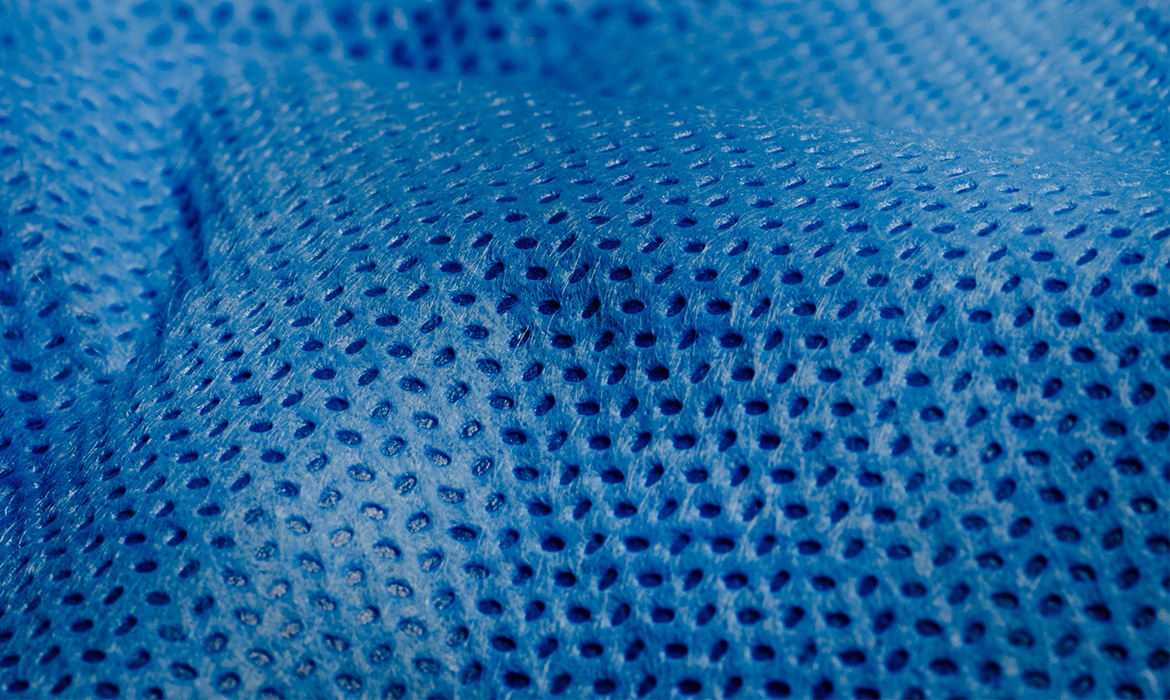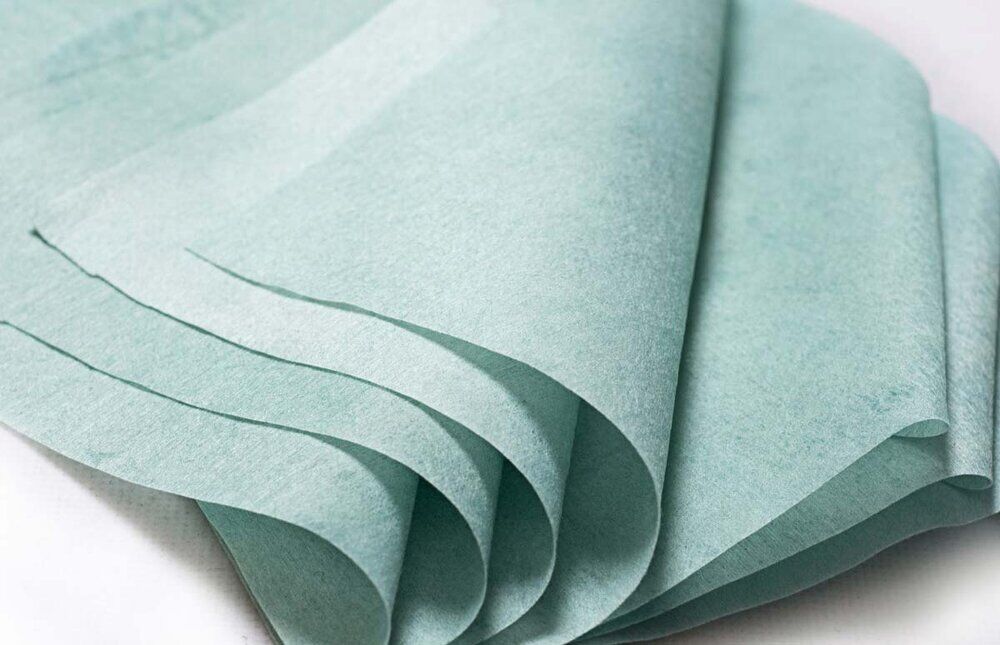
What is Agricultural Fabric?
The most recent

What is Geotextile?
9/20/2025Geotextile is a type of engineered fabric used in civil engineering projects. At HarirBaft Amir, we provide geotextiles at the best prices.

What is Agricultural...
9/12/2025Agricultural fabric is made from materials such as polypropylene or polyethylene and is manufactured using technologies like weaving or spunbond processes.

What is Nano Fabric?
8/20/2025Nano fabric, or nanofabric, is one of the key achievements of nanotechnology in the textile industry, revolutionizing our understanding of fabrics and their applications.
The most visited

Where to Buy Spunbon...
9/30/2023Spunbond fabrics belong to a category of non-woven textiles made from polypropylene. Unlike conventional fabrics constructed with warp and weft, spunbond materials

What is Spunbond
10/2/2023One of the most captivating, functional, and widely-used fabrics in the domestic market is the spunbond fabric. This fabric plays a significant role in the production of industrial products due to its unique characteristics.

Crafting Melt Blown ...
9/30/2023Melt blown textiles have emerged as one of the most sought-after materials, gaining prominence especially in the healthcare field
subscribe to newsletter

What is Agricultural Fabric?
9/12/2025
What is Agricultural Fabric?
In today’s world, agriculture faces numerous challenges such as climate change, water scarcity, and the increasing need to boost productivity. This makes the use of modern tools and technologies more important than ever. One of the lesser-known yet highly effective tools is agricultural fabric. At first glance, the term may seem unusual, but the vital role these fabrics play in improving planting, growth, and harvesting conditions is both impressive and undeniable. In this article, we will take a closer look at this emerging concept and explore why agricultural fabrics have become a key element in modern farming.
Introduction to Spunbond Agricultural Fabric
Agricultural fabric refers to a specialized covering made from lightweight, durable, and often permeable synthetic fibers, designed to improve environmental conditions for plants during various stages of growth. These fabrics are typically made from materials such as polypropylene or polyethylene and manufactured using technologies like weaving or spunbond processes. The result is a lightweight fabric that is resistant to stretching, UV radiation, and environmental factors such as wind and rain.
Physically, agricultural fabrics are usually produced in white or black colors and feature a mesh or semi-permeable structure. They allow light, air, and moisture to pass through while preventing pests, dust, and extreme cold from entering. These fabrics come in various sizes and thicknesses to meet the diverse needs of farmers. Essentially, agricultural fabric is an efficient, multifunctional tool for controlling growing conditions and improving crop yield in farmlands.
Benefits of Using Agricultural Fabric on Farms
Some of the key benefits of agricultural fabrics include:
- Protection from pests and birds: Acting as a physical barrier, these fabrics prevent insects and birds from reaching plants without the need for continuous pesticide application.
- Temperature regulation: The fabric helps maintain surface warmth at night and reduces intense sunlight during the day, keeping root and leaf temperatures balanced.
- Reduced water evaporation: Agricultural fabrics prevent direct soil evaporation, helping conserve moisture—a crucial advantage in arid regions.
- Weed control: By blocking sunlight from reaching the soil, these fabrics naturally inhibit weed growth, reducing the need for herbicides.
- Increased crop yield: Providing a more stable and protected environment allows plants to grow more uniformly, resulting in higher-quality and larger-volume harvests.
- Reduced maintenance costs: By decreasing the need for water, pesticides, and fertilizers, agricultural fabrics help lower operational expenses over the long term.
Types of Agricultural Fabrics and Their Applications
Agricultural fabrics come in various types, each designed for specific agricultural needs and environmental conditions. Some of the most common types include:
- White mesh fabric: Ideal for temperature control and providing shade while allowing sufficient light penetration. Perfect for greenhouses and farms in hot regions.
- Black non-mesh fabric: Used to prevent weed growth and retain soil moisture in dry areas. The black color helps absorb heat and maintain warmth at night.
- UV-resistant fabric: Protects plants from direct sunlight and harmful UV rays, often used for sensitive crops.
- Insulating or protective layers: Designed to protect plants from cold nights or frost, commonly used in cold-region farms during winter.
Difference Between Agricultural Fabric and Traditional Ground Covers
Traditional ground covers, such as black or sandy plastic sheets, are used to protect soil and suppress weeds. However, agricultural fabrics have several key differences:
- Permeability: Agricultural fabrics are often mesh-structured, allowing air and moisture to pass through, unlike traditional plastic covers that can trap humidity and cause mold or rot.
- Durability: Agricultural fabrics are more resistant to temperature changes and UV radiation, making them longer-lasting than plastic alternatives.
- Soil health: Unlike plastic sheets, these fabrics allow the soil to breathe, helping maintain soil health.
- Moisture and temperature retention: Agricultural fabrics effectively maintain soil moisture and temperature, whereas plastic covers are less efficient.
Tips for Choosing the Best Agricultural Fabric
Selecting the right agricultural fabric can significantly impact plant health and crop yield. Consider the following points:
- Plant type and environmental conditions: Determine the specific needs of your crops and growing region. Heat-sensitive plants may require insulating or frost-resistant fabrics, while areas with strong sunlight may need UV-protective fabrics.
- Fabric material: Agricultural fabrics can be made from polypropylene or polyethylene. Ensure the fabric you choose is durable enough to withstand the environmental conditions of your farm.
- Tensile strength and physical resistance: The fabric should resist stretching and tearing, protecting plants from wind or physical damage.
- Light and air permeability: Fabrics used in greenhouses or for light-sensitive crops should balance sunlight filtration with adequate air circulation.
- Choose a reputable manufacturer: For high-quality agricultural fabric, buy from trusted companies such as Harir Baft Amir. This company offers a wide range of agricultural fabrics to help farmers make informed and reliable choices.
By keeping these tips in mind, you can select a suitable, high-quality agricultural fabric for your farm and maximize its benefits.
Start a conversation
Hello ! Click on a member below and chat.